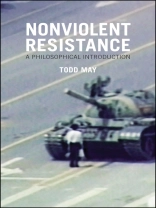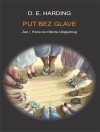We see nonviolent resistance all over today’s world, from
Egypt’s Tahrir Square to New York Occupy. Although we
think of the last century as one marked by wars and violent
conflict, in fact it was just as much a century of nonviolence as
the achievements of Mohandas Gandhi and Martin Luther King, Jr. and
peaceful protests like the one that removed Ferdinand Marcos from
the Philippines clearly demonstrate. But what is nonviolence?
What makes a campaign a nonviolent one, and how does it work?
What values does it incorporate?
In this unique study, Todd May, a philosopher who has himself
participated in campaigns of nonviolent resistance, offers the
first extended philosophical reflection on the particular and
compelling political phenomenon of nonviolence. Drawing on
both historical and contemporary examples, he examines the concept
and objectives of nonviolence, and considers the different dynamics
of nonviolence, from moral jiu-jitsu to nonviolent coercion.
May goes on to explore the values that infuse nonviolent activity,
especially the respect for dignity and the presupposition of
equality, before taking a close-up look at the role of nonviolence
in today’s world.
Students of politics, peace studies, and philosophy, political
activists, and those interested in the shape of current politics
will find this book an invaluable source for understanding one of
the most prevalent, but least reflected upon, political approaches
of our world.
Inhaltsverzeichnis
Preface
Chapter 1: Vignettes of Nonviolence
Chapter 2: What is Nonviolence?
Chapter 3: Dynamics of Nonviolence
Chapter 4: The Values of Nonviolence: Dignity
Chapter 5: The Values of Nonviolence: Equality
Chapter 6: Nonviolence in Today’s World
Endnotes
Über den Autor
Todd May is Class of 1941 Memorial Professor of Philosophy at Clemson University












